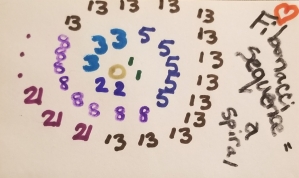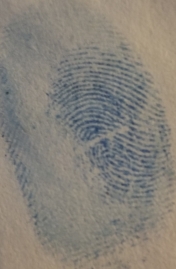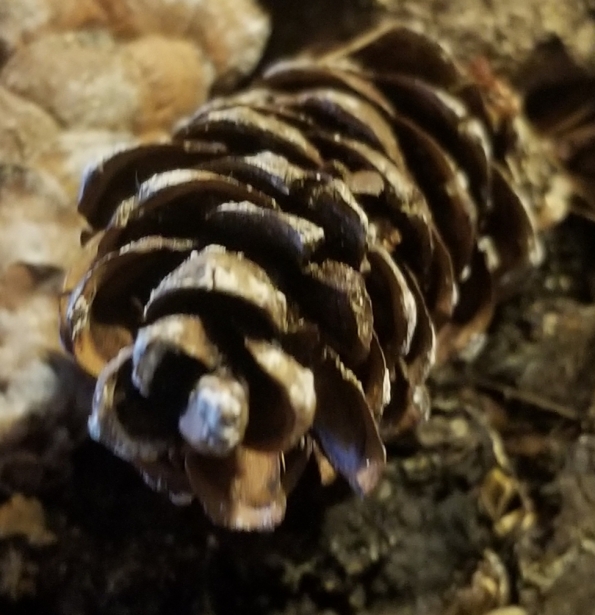
Surrounded by the Beauty of Math
My daughter has been reading a book that combines comical storytelling with introducing math concepts. She recently came across a chapter that covered the Fibonacci sequence: 0, 1, 1, 2, 3, 5, 8, 13, 21, 34, 55, 89, 144, etc. It was hard for her to imagine why these numbers mattered and why she needed to know about them. Familiar with how much I love math and numbers, she asked me to explain the book’s illustrations in a way she could grasp.

Numbers in Nature
First I wrote out the sequence in a linear fashion, adding the numbers as we read the section together. Then I showed her how the sequence can be seen in nature. It usually appears as a spiral. An online search for images of the Fibonacci sequence as it appears in nature resulted in images of: the center of sunflowers, pine cones, plants, snowflakes, seashells, the double helix, human fingerprints and the design of the human ear (nautilus).
As Unique as…Fibonacci

My daughter studied her fingerprints. She was fascinated by the idea that her fingerprint, unique to her, contains a clear spiral pattern. She pressed her finger on a blue patch of ink pad, pressed it on a piece of paper, and took a picture of it. I did the same with mine, in purple.
How can something so unique as an individual’s fingerprint also contain a universal pattern such as a spiral? The same thing holds true for our genetic blueprint, reflected in The Double Helix (Watson, James D., 1968). To me, it’s nothing less than amazing, inspiring wonder and respect for the design of the entire universe. Our very uniqueness also connects us, at the cellular level, to the infinite order of our galaxy and beyond. Carl Sagan was telling the truth when he said, “we are made of star stuff.”

The Heart of a Sunflower
All elements on earth seem to hold the spiral as a universal pattern for growth, whether this means the design of a living organism’s growth pattern (sunflower, pine cone, seashell), or a species’ proliferation across planet Earth (rabbits, bees, etc). For the sunflower, the spiral is at the very heart of its center, and is the part of the flower that holds the seeds, which serve as a nutritious snack for humans, hamsters, birds, and other creatures.
Mysterious Pine Cones
Pine cones hold nuts beneath the tough semi-circular casings that line the core of their form. The cones seem to be designed especially for rodents with very long teeth and little hands shaped like those of squirrels or chipmunks. Their hands are shaped to keep a firm hold on a pine cone, and their teeth are shaped to peel off the hard shell that resembles tough tree bark to get to the nutrition-packed nuts inside. It’s one way that our Mother Earth takes care of the creatures that depend completely on her for their “daily bread.” In return, the squirrels and chipmunks help Earth plant more trees, which make more oxygen for all species to continue living. The mathematical patterns in nature are both beautiful and life-giving.
